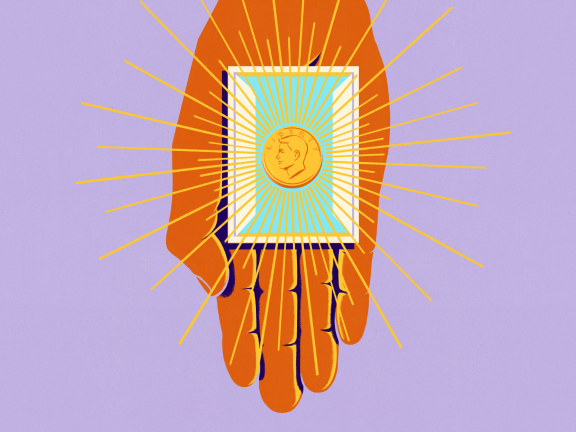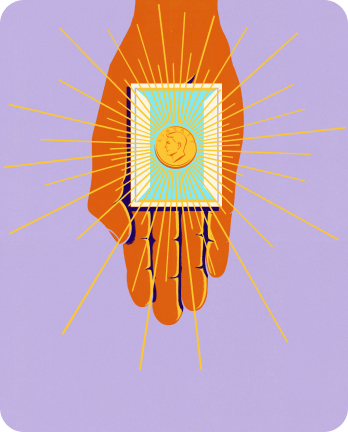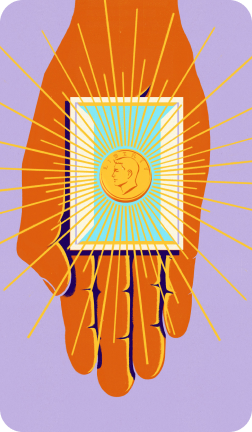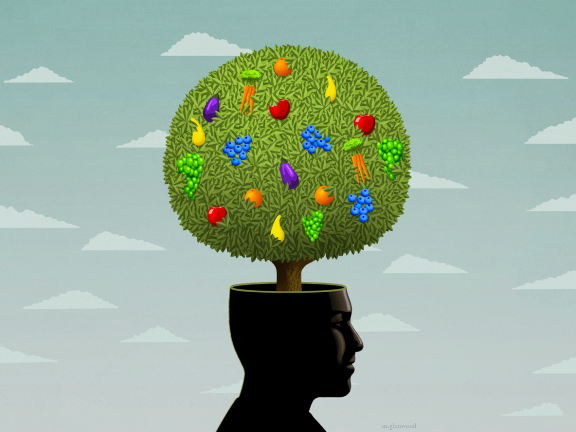Partner Content
This content was paid for by Jefferson Enterprise and created by INQStudio. The news and editorial staffs of The Inquirer had no role in this article’s creation.
This content was paid for by Jefferson Enterprise and created by INQStudio. The news and editorial staffs of The Inquirer had no role in this article’s creation.
Knowing how substance use disorder affects our brains, bodies, and behavior has created hope for innovative new treatments.
Knowing how substance use disorder affects our brains, bodies, and behavior has created hope for innovative new treatments.
Knowing how substance use disorder affects our brains, bodies, and behavior has created hope for innovative new treatments.
Knowing how substance use disorder affects our brains, bodies, and behavior has created hope for innovative new treatments.
he detrimental effects of addiction on individuals and communities are well known, but the approach to treating substance use disorder (SUD) has evolved over the years.
Step back into the neon-lit 1980s, when television screens crackled with a sober message that left an indelible mark on pop culture. A gravel-voiced presenter holds up an egg, declares it “your brain,” and then introduces a hot frying pan as “drugs.” With a dramatic flourish, he cracks the egg into the scorching skillet. As the egg sizzles and pops, he solemnly proclaims: “This is your brain on drugs. Any questions?”
For many coming of age in the late ’80s, when the Partnership for a Drug-Free America aired the spot, that fried egg left a lasting impression of the harmful effect of drugs as well as the implication that the decision to stay away or get away from drugs was an easy one. Fortunately, in the decades since, neuroscience and public health research have provided a more informed lens on how the use of substances such as alcohol and controlled, prescription, and over-the-counter drugs affects our brains, behaviors, and communities.
The “no wrong door” approach to SUD treatment advocates for access to addiction care no matter where or how a person enters the health care system.
“The work that I do recognizes that people who use drugs are autonomous people who have agency. We can’t reduce them to their drug use,” says Megan Reed, Ph.D., a harm reduction expert and public health professor at Thomas Jefferson University. “These are people with full lives of importance and meaning.”
Inside the Mind’s Drug Chemistry
Mind-altering substances can profoundly impact the brain’s complex chemistry. Here’s how.
The brain’s prefrontal cortex, responsible for decision making and impulse control, is vulnerable to depressants like alcohol, stimulants like cocaine and amphetamines, and opioids like heroin and fentanyl. A compromised prefrontal cortex drastically impairs decision-making, which can lead to harmful outcomes.

People who use drugs are autonomous people who have agency. We can’t reduce them to their drug use. These are people with full lives of importance and meaning.”
Megan Reed, Ph.D.
harm reduction expert and public health professor at Thomas Jefferson University
Recovering from SUD entails navigating the intricacies of withdrawal. A sudden cessation of drug use can unleash neurochemical turbulence, exacerbating anxiety, cravings, and often horrific physical symptoms. Unmanaged attempts at stopping substance use can intensify withdrawal symptoms and jeopardize the chances of recovery.



Corroding Community
The consequences of substance use disorder extend far beyond the individual.
Substance use disrupts the release and functioning of oxytocin. Originating from the hypothalamus, oxytocin promotes social bonds and the cultivation of trust. A microscopic shift in oxytocin production in the brain can have community-scale impacts, fraying bonds that create community cohesion.
The drug trade itself too often serves as a grim backdrop and engine for violence. Illicit drug trafficking frequently correlates with the commission of violent crimes, driven by competition for drug markets and interpersonal disputes. The proliferation of guns amplifies the lethality of drug-related violence.
Mass incarceration resulting from both the drug trade and prevailing policies and drug laws further exacerbates the erosion of community bonds. On any given day, 2.7 million children experience parental incarceration, reports the Sentencing Project. Just over half of incarcerated parents used drugs in the month leading up to their arrest. Over a third were under the influence of alcohol during the commission of their crimes.
This separation disrupts familial and social support networks, weakening the fabric of communities and intensifying the impact of substance use on society. Addressing both addiction and the systemic and policy choices fueling mass incarceration is vital for rebuilding resilient communities.

People should be able to just call a hotline or Google ‘treatment near me’ to find the right resources in real time.”
Megan Reed, Ph.D.
harm reduction expert and public health professor at Thomas Jefferson University
According to county-level Centers for Disease Control data, Philadelphia County had the highest drug overdose rate among 48 counties across the nation with populations over one million people in 2022. The problem is accelerating. Unintentional deaths from drug overdoses in the county that year increased by 11% over 2021, representing a significant strain on people who use drugs, their families, and their communities, as well as on resources as municipal and philanthropic sectors mount responses to the crisis.
New Hope
The neurochemical hold substances can have on the human brain makes recovery an incredible challenge, but evidence gathered over recent decades supports using medicine to treat SUDs, says Reed. However, according to Reed, “The United States is decades behind many other countries” in providing this type of treatment. Adoption has been hindered by a lack of political and popular support based on the idea that it is “simply replacing one drug with another,” she says.
But that’s changing. “There’s more widespread acceptance of medications to treat drug use—especially for opioid use disorder,” says Reed. In addition to mountains of evidence showing how effective medications are, “one thing that shifted is many more of us have lost loved ones to overdoses.” This circumstance has helped to create new empathy—and urgency. According to a 2019 survey by the Pew Charitable Trusts, nearly one-third of Philadelphians knew someone who had died of an opioid overdose.
The Drug Addiction Treatment Act of 2000 mandated that physicians undergo an intense training and certification process before being allowed to prescribe medications, such as buprenorphine, for opioid use disorders. These medications curb cravings, withdrawal symptoms, and the “high” from heroin and other opioids by binding to the same receptors in the brain that opioids target.
A 2023 study found that in 2019 only 28% of people who could benefit from these drugs had been prescribed them, despite evidence that these medications reduce deaths, curb the amount time people use opioids, and reduce arrests.
The Consolidated Appropriations Act of 2023 reverses this requirement and has been hailed as a potential lifesaver for thousands of people annually.
The “no wrong door” approach to SUD treatment advocates for access to addiction care no matter where or how a person enters the health care system. This approach could increase the number of those treated, the quality of care, and the chance of positive outcomes.

There’s more widespread acceptance of medications to treat drug use—especially for opioid use disorder. One thing that shifted is many more of us have lost loved ones to drug use.”
Megan Reed, Ph.D.
harm reduction expert and public health professor at Thomas Jefferson University
The Jefferson Addiction Medicine Service, or JAMS, facilitates comprehensive and patient-centered care at Jefferson Health. JAMS team members guide patients and medical teams through challenging behavioral scenarios, addressing acute pain in patients undergoing withdrawal and collaborating on complex discharge plans.
“They’re an awesome, lean, and nimble consulting service—committed folks doing the work every single day,” says Reed. By managing diverse aspects of addiction care, JAMS is a model for ensuring a comprehensive and seamless continuum of support and sustainable patient outcomes.
In May 2023, Jefferson Health received a $1.5 million gift to create the Stephen and Sandra Sheller Consult and Bridge Pilot Program. This initiative will scale the work of JAMS to bridge the divide between acute hospital treatment and ongoing outpatient substance use disorder programs in Philadelphia, ensuring smooth transitions along the path to recovery from emergency rooms to community systems and addressing vital long-term medical, behavioral, and social needs.
“It’s going to be a service for people with substance use disorders who are exiting the hospital where they can access services such as buprenorphine prescription and wound care and take care of primary health needs,” says Reed. “It’s a resource entirely lacking from our current healthcare infrastructure.”
Our SUD treatment approaches are failing to account for the day-to-day needs and lived experiences of people who need care. The result is missed opportunities to get the best outcomes from the resources we have and to make truly needle-moving investments in the future.
A 2024 study conducted by a team of researchers, including Reed, illustrates how the SUD treatment system in Philadelphia, despite its merits, is a patchwork replete with gaps through which people seeking care can fall. The study offers insights and policy recommendations that resonate beyond Philadelphia’s city limits.
Issues such as lack of transportation, language barriers, preexisting health conditions, unmet housing and food needs, and unavailable childcare can cause people to cycle out of treatment prematurely, if they’re able to access it at all. The treatment onboarding process is often a grueling experience that can last for more than half a day—particularly punishing for those experiencing withdrawal. Uneven distribution of treatment locations can create an insurmountable gulf between people and care at times of crisis. Stigma can inhibit effective and empathetic treatment in health care facilities.
The study’s authors call for taking a people-centered approach that accounts for these challenges. Among the policy changes they recommend:
These are policy solutions that can be enacted at the city, state, and federal levels to help prevent opioid overdoses and deaths and promote lasting SUD recovery.
Changing Paradigms
Shifting our language and policy around drug use from stigmatization and criminalization to empathy and treatment has been critical to garnering support for these approaches.
But while addiction treatment has progressed from incarceration as the default response, our treatment paradigms still have a long way to go. The medical field’s shift from “user” to “patient” is one step toward garnering public support for investments in proven interventions that treat addiction as a public health crisis requiring a public health response.
We also need to see people with SUD as participants in their healing, says Reed—“people making decisions for their health rather than decisions that are rooted in shame and stigma.” To make progress on addiction and its impact on communities, we need to start with empathy, innovation, and an all-of-society approach to supporting recovery.


THERE’S HELP If you or someone you know needs help with a substance use disorder, visit findtreatment.gov to find a treatment facility near you.
THERE’S HELP
If you or someone you know needs help with a substance use disorder, visit findtreatment.gov to find a treatment facility near you.
Illustrations by James Steinberg
Home of Sidney Kimmel Medical College











































